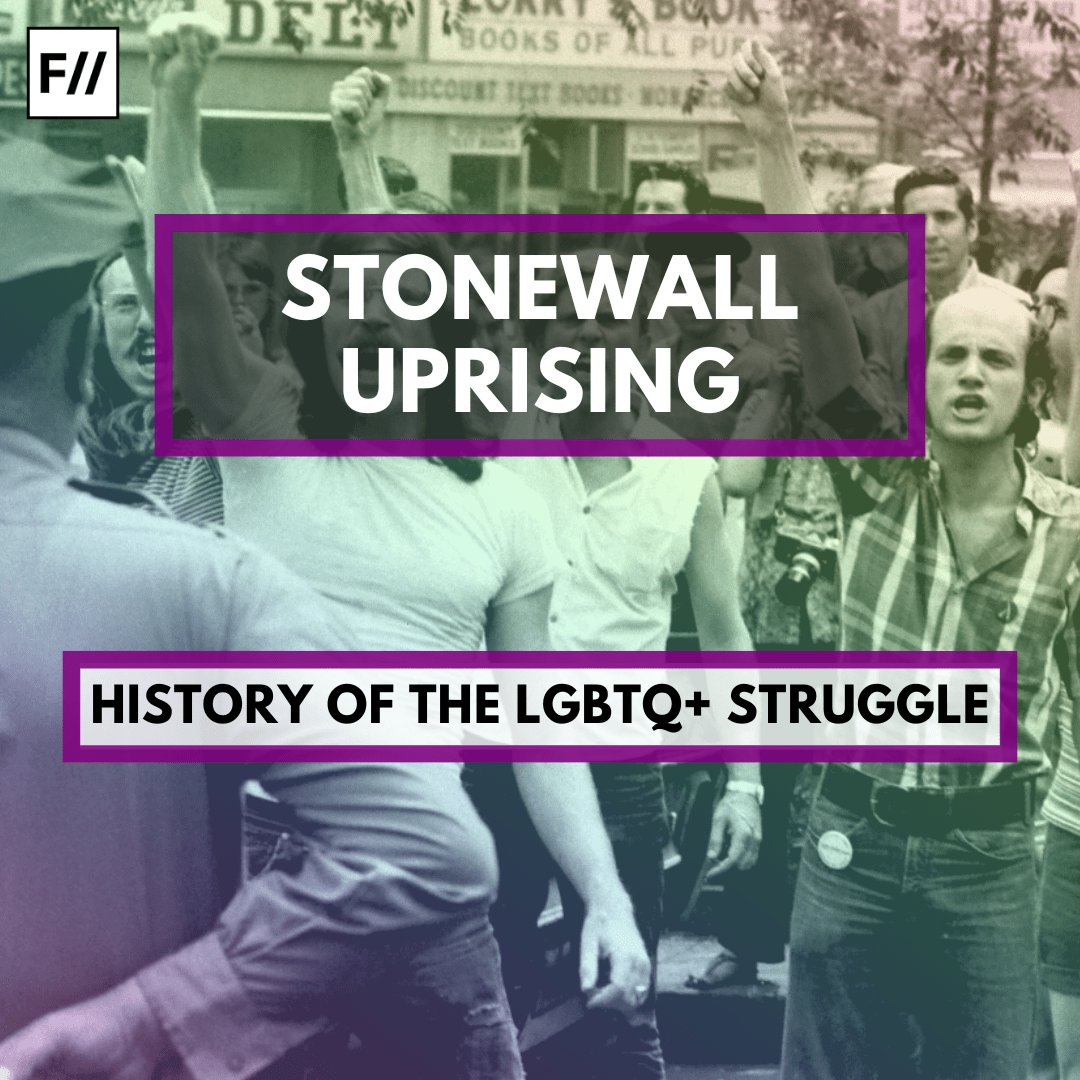This June marks the 53rd anniversary of the Stonewall riots, a watershed moment in the struggle of the LGBTQIA+ community. It is regarded as history’s first major protest on behalf of equal rights for LGBTQIA+ people.
So, what happened on June 28, 1969? How did it change the course of history and queer communities across the world?
The Uprising of 1969
The Stonewall Riots, also called the Stonewall Uprising, began in the early hours of June 28, 1969, when New York City police raided the Stonewall Inn, a gay club located in the Greenwich Village neighborhood of Lower Manhattan in New York City.

USA In The 1960s
Stonewall Inn was one of the most popular gay clubs in the city and served as a space for the LGBTQIA+ community to hold drag shows, dance, sing, and express themselves. Back then, homosexuality was still considered a criminal offense, and same-sex relationships were legalised much later in 1980. Queer gatherings and establishments were prohibited under law, and gay bars were infamously run by the ‘mafia’.

What Happened On June 28, 1969?
On the morning of 28 June 1969, nine policemen entered the premises of Stonewall with a warrant, without prior information. The officers harassed the people and arrested 13 for the use of illicit liquor. They started frisking those who violated the state’s ‘gender-appropriate clothing’ law. In accordance with a New York law that authorized the arrest of anyone not wearing at least three articles of gender-appropriate clothing, several people were taken into custody.

How did the Stonewall Riots start?
While such raids were quite common, the people revolted against the police this time. Several gay residents of Greenwich Village gathered in crowds outside the Stonewall Inn and started raising their voices against the police officers. Thousands of people joined the uprising and the demonstration continued for five more days.

Landmark In The LGBTQ+ Struggle
Village residents organized themselves into activist groups demanding the right to live openly regarding their sexual orientation, and without fear of being arrested.
The Stonewall uprising served as a catalyst for the LGBTQIA+ Rights Movement, following which several gay rights organizations such as the Gay Liberation Front, and the Human Rights Campaign emerged.

Stonewall’s Legacy
A year after the Stonewall Uprising, the first Pride march in New York history was held on June 28, 1970. It is celebrated as Christopher Street Liberation Day, based on the street where Stonewall Inn was located.

The Stonewall Riots are a testament to the fact that solidarity and dissenting against injustice can be the first step to igniting a movement that can change the course of history.
Over five decades later, there are now hundreds of Pride celebrations around the world. Pride continues to be a place for people fighting oppression to come together and seek strength in each other. We must remember that while Pride is a celebration, it is also an intersectional political movement, now more than ever.
About the author(s)
Aishwaryaa is a content producer with a passion for storytelling. She is a keen explorer of digital media and learner of feminism, seeking to drive change and social impact through her work. Her interests lie in culture, gender, and human interest stories. You can find her on Twitter, Instagram and LinkedIn.




